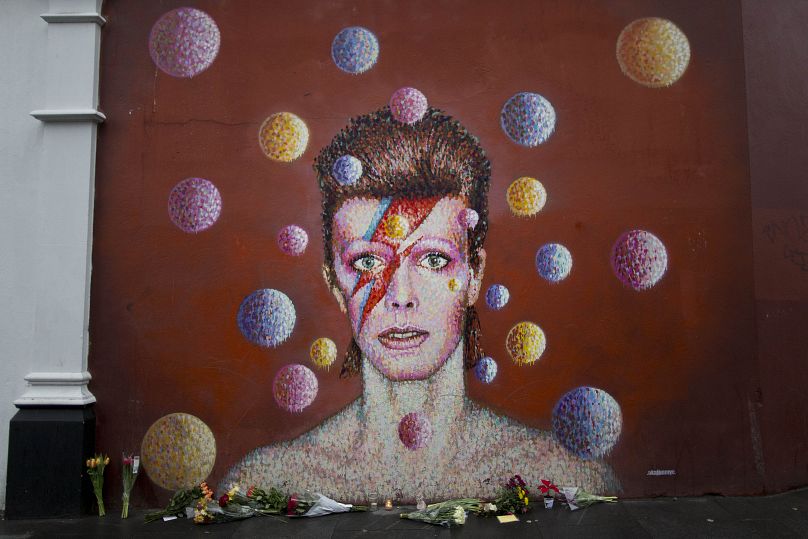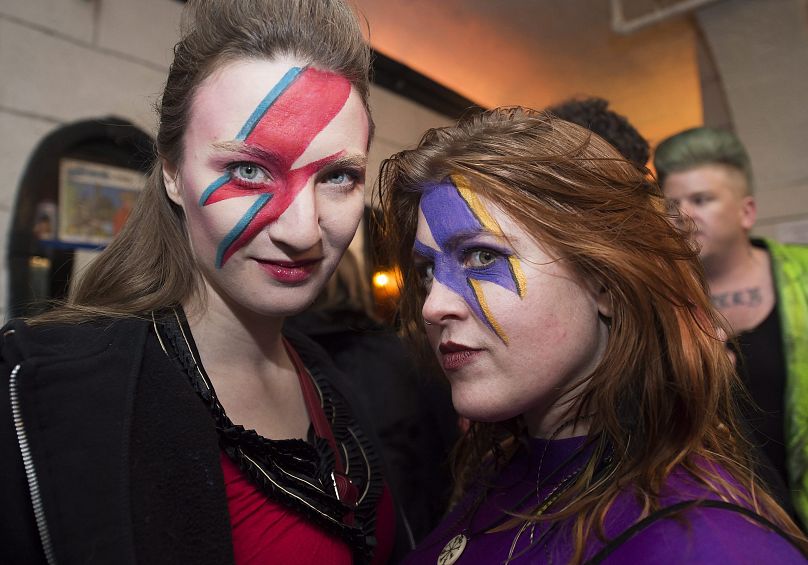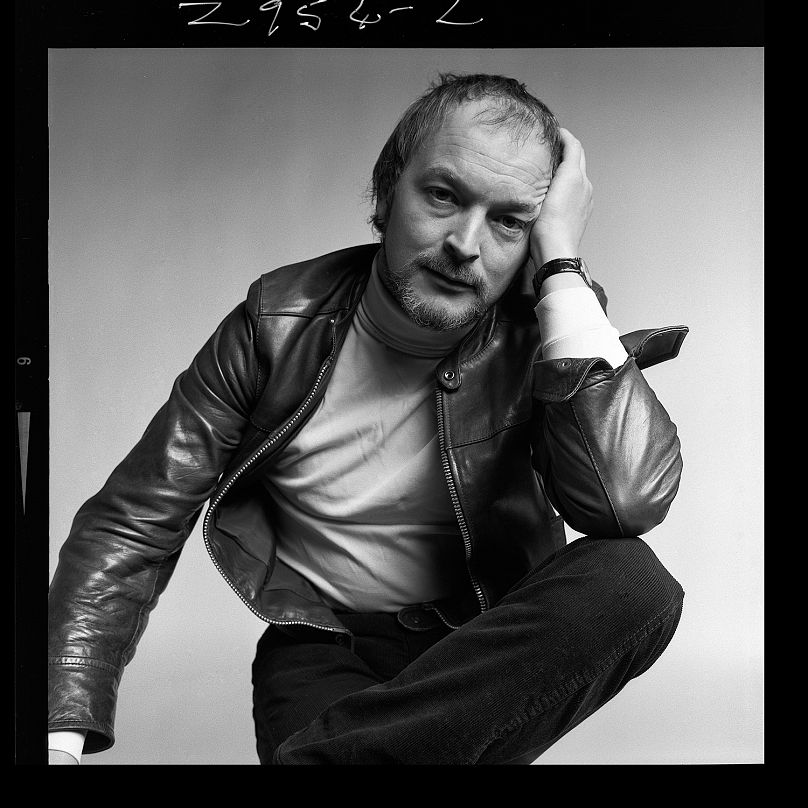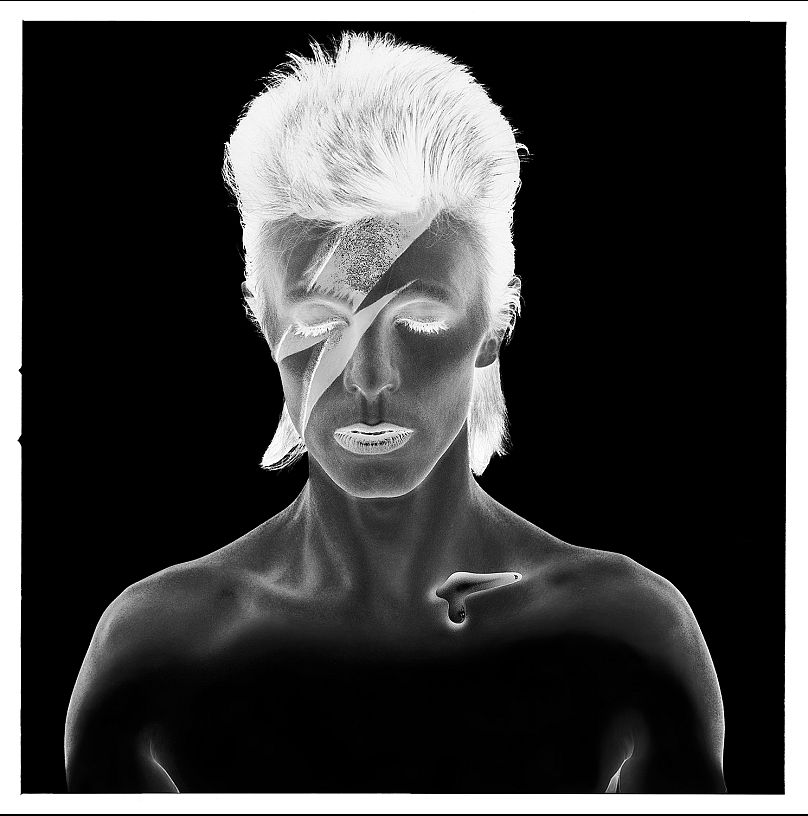Watch that man! Name a more iconic duo than David Bowie and lightning bolts. This new London exhibition traces the story of the famous album cover behind 'Aladdin Sane'.
A new exhibition at London’s Southbank Centre is celebrating the legacy of one of rock’s most iconic images: David Bowie’s album cover for ‘Aladdin Sane’. 50 years after the release of the album, the lightning bolt face paint is one of the most enduring images of Bowie’s career, from memorials to artistic tributes.
Pale skin sheening like porcelain, under a bright red bush of hair and that glimmering red and blue lightning bolt - Bowie never looked more ethereal in front of photographer Brian Duffy's lens.
As the follow up album to Bowie breakthrough, 1971’s ‘The Rise and Fall of Ziggy Stardust and the Spiders from Mars’, it was crucial to strike big. Extensive touring of the Ziggy Stardust album had shown there was an appetite for Bowie’s alien persona, developed in the concept album.
Something equally as glam and Martian was necessary. Duffy and Bowie came up with the lightning bolt image, bifurcating the musician’s face to represent the new album’s theme of insanity.
The album cover broke records before the public even saw it. Bowie’s manager Tony Defries wanted the label RCA to spend huge amounts on the cover to ensure they’d follow through with spending a lot on promoting the album itself. Insisting on a seven-colour printing system over the traditional four, the album gained its unique visual brilliance and also became the most expensive cover art ever made at the time.
All that effort was worth it. Alongside ‘Abbey Road’ by The Beatles, and ‘Dark Side of the Moon’ by Pink Floyd, ‘Aladdin Sane’ is easily one of the most recognisable album covers of all time.
The image is such a definitive part of Bowie’s image, many people assume it is the cover for his previous album ‘Ziggy Stardust’ as well. Much like John Lennon’s glasses, just the black and white outline of the cover’s lightning bolt will immediately invoke Bowie’s image.
When Bowie died in 2016, the majority of the murals popping up around the world were of the ‘Aladdin Sane’ cover.
“My father’s image of Bowie is often called the Mona Lisa of Pop,” says Chris Duffy, son of the photographer.
“It’s important to remember it was the result of a short studio shoot using film, which then had to be sent out for commercial processing. There were no instant digital images or photoshop then. It’s extraordinary how it’s lasted and been endlessly reworked. Wherever I go in the world, it’s always somewhere on a t-shirt,” he continues.
From 6 April to 28 May, London’s Southbank Centre will run “Aladdin Sane: 50 Years”, an interactive exhibition that not only looks at the history behind the legendary cover, but also celebrates the album and Bowie’s career in the way the artist would have wanted - as a multimedia extravaganza.
Curated by Chris Duffy, the exhibition will also have live music events.
Anna Calvi, Scissor Sisters’ Jake Shears, Roxanne Tataei, Tawiah, and Lynks will join the Nu Civilisation Orchestra to perform 'Aladdin Sane'. Queer House Party and Queer Bruk will also celebrate Bowie’s legacy at two club nights.
The Southbank is also hosting multiple talks and has launched a poetry collection alongside the National Poetry Library of works inspired by the album.
“We’re honoured to pay tribute to David Bowie, who made his Southbank Centre debut in 1969. The Aladdin Sane album cover portrait is considered to be one of the most influential pop culture images of the past half century, and the music remains fresh and contemporary, so we wanted to recognise this major anniversary and reflect on the album and its artwork’s enduring legacy,” says Southbank Centre Artistic Director Mark Ball.
“It’s a work that continues to inspire today’s contemporary artists and the gender fluidity of the images still resonate deeply in queer culture in the UK and across the world,” Ball says.
The Southbank Centre Archive will present a separate free display exploring David Bowie’s history with the Centre, stretching over 50 years, and his ongoing legacy. From his performance in the then-recently opened Purcell Room in 1969, to later shows alongside Lou Reed and his curation of Southbank Centre’s annual contemporary music festival, Meltdown, never before seen archival material will be available for the public.















